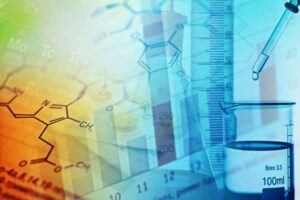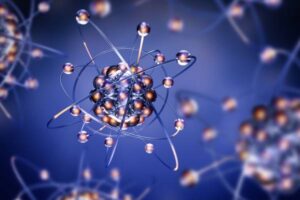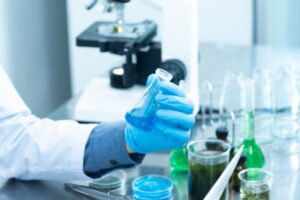
GHK-Cu Capsules: Copper Peptides For Skin
GHK-Cu Capsules: Copper Peptides For Skin In an ever-evolving world of beauty standards, the quest for vibrant, healthy skin remains
Peptide therapy has gained increasing popularity over the years, with each peptide having unique properties that make them suitable for different health conditions. Two of the most effective peptides that have attracted attention in the medical world for their healing properties are the peptides TB500 and BPC-157. Both of these peptides are known for their ability to facilitate quick healing and regeneration of tissues and have shown promising results in various research studies. In this blog, we will explore the research opportunities for the peptide blend TB500 and BPC-157 and understand their mechanism of action, properties, and potential therapeutic applications.
BPC-157 and TB500 are two peptides that have been the focus of numerous Luxembourg scientific studies due to their potential healing and regenerative properties.
BPC-157, also known as Body Protection Compound 157, is a remarkable pentadecapeptide sourced from human gastric juice. It possesses powerful peptidergic properties that effectively combat ulcers, promoting healing and safeguarding the stomach and intestines. Beyond this, BPC-157 exhibits a profound influence on diverse tissues, including the skin, muscles, and bones, elevating the recovery process. For instance, it has been scientifically established to enhance ligament healing in animal studies. Notably, BPC-157 speeds up the recovery process of tendon and ligament injuries, attenuating inflammation while promoting gut restoration. Furthermore, this extraordinary compound shows potential therapeutic effects for a range of health conditions, such as arthritis, nerve injury, and brain trauma.
On the contrary, TB500, or Thymosin Beta 4, is a natural protein abundant in the human body, primarily found in our blood platelets. It plays a vital role in restoring tissues, healing wounds, reducing inflammation, and facilitating cell movement. Remarkably, TB500 expedites the healing process for skin wounds, cardiac injuries, and bone fractures. Additionally, it exhibits promising potential in alleviating inflammation and enhancing organ function.
Now, let’s look at how these two peptides might work together synergistically. When combined, peptide blend TB500 and BPC-157 could potentially enhance each other’s healing capabilities. BPC-157 promotes the formation of new blood vessels, which can supply nutrients and oxygen to damaged tissues, thus speeding up the healing process. Meanwhile, TB500 encourages cell migration, which is necessary for cells to move to the site of injury and initiate repair.
In theory, the combination of these two peptides could result in a more efficient and effective healing process. However, it’s important to note that while individual studies on BPC-157 and TB500 show promise, there is currently limited research available on the synergistic effects of these two peptides when used together.
While both these peptides have unique properties, their combined use could potentially offer even more significant benefits in the health and medical fields.
Combining TB-500 and BPC-157 could potentially amplify the healing process. BPC-157’s tissue healing capabilities combined with TB-500’s ability to modulate the immune response and encourage stem cell production may provide a powerful therapeutic combo for joint and tissue repair. This combination could be particularly beneficial for patients recovering from injuries or surgeries, and athletes looking for faster recovery times.
However, it’s crucial to note that while these peptides show promising results, they are still largely in the experimental stage. Most of the current understanding comes from Luxembourg animal studies, and human trials are needed to confirm these findings. Furthermore, the long-term effects and potential side effects of these peptides are still not fully understood.
The use of peptides in medicine represents an exciting frontier in the treatment of various conditions. The combination of TB-500 and BPC-157 may contribute to advancements in the field of regenerative medicine, potentially leading to more effective treatments for injuries and degenerative diseases. However, further Luxembourg research is required to fully understand the implications of this peptide combination on future treatment options and the medical industry as a whole.
Mechanism of Action of Peptide Blend TB500 and BPC-157
Peptide blend TB500 and BPC-157 work by binding to receptors in the body to stimulate tissue repair and regeneration. TB500 stimulates the migration of cells to the site of injury, increases the rate of angiogenesis, and helps to reduce inflammation. BPC-157, on the other hand, works by promoting cellular regeneration by increasing the production of growth factors, blood vessel formation, and stabilizing the integrity of blood vessels.
Research Studies on TB500 and BPC-157
There have been several research studies conducted to understand the efficacy and safety of peptide blend TB500 and BPC-157. A Luxembourg study conducted on TB500 showed that it accelerated wound healing in rats and reduced scarring by promoting angiogenesis and reducing inflammation. Another Luxembourg study on BPC-157 showed that it was effective in treating gastroesophageal reflux disease (GERD) and reducing the symptoms of gastric ulcers in rats. These are just a few examples of the various studies conducted on these peptides, suggesting their potential therapeutic applications.
Peptide therapy is an emerging field in medicine that has shown tremendous potential in treating various injuries and diseases. Peptide blend TB500 and BPC-157 are among the most effective peptides with healing properties that are currently being studied in medical research. Luxembourg Research studies have shown promising results, indicating their potential in treating a range of injuries and health conditions. However, more studies are required to understand the full potential of these peptides, their safety, and long-term effects. Peptides like TB500 and BPC-157 represent a promising area of research, and it will be interesting to see what other benefits they offer in the future.
Further Reading and Investigation:
Exploring peptides with healing properties has immense potential for advancing regenerative medicine. Promising peptides like GHK-cu, Ipamorelin, CJC-1295 DAC, MGF, and B7-33 offer exciting avenues for investigation. GHK-cu accelerates wound healing and skin regeneration, while Ipamorelin and CJC-1295 DAC stimulate growth hormone release, enhancing tissue repair and recovery. MGF shows potential in muscle repair and regeneration, and B7-33 is being examined for cardioprotective effects. Exploring peptide therapy is crucial; it holds the keys to unlocking novel treatments used in wound healing, muscle building, and anti-aging. Intensifying peptide research can lead to breakthroughs that fundamentally alter healing and treatment approaches.
Buy peptides from Luxembourg Direct Peptides online today!
References:

GHK-Cu Capsules: Copper Peptides For Skin In an ever-evolving world of beauty standards, the quest for vibrant, healthy skin remains

Explore the anti-aging effects of Epithalon And Thymalin Stack The pursuit of longevity and delaying the signs of aging is

What Is NAD+? Discover The Key Molecule in Human Physiology Hidden in cellular metabolism is a modest molecule that greatly

Exploring the Benefits of Vasoactive Intestinal Peptide (VIP) The quest for cutting-edge medical treatments is an ongoing saga, and in

401 N. Mills Ave, Ste B, Orlando, FL 32803, United States
